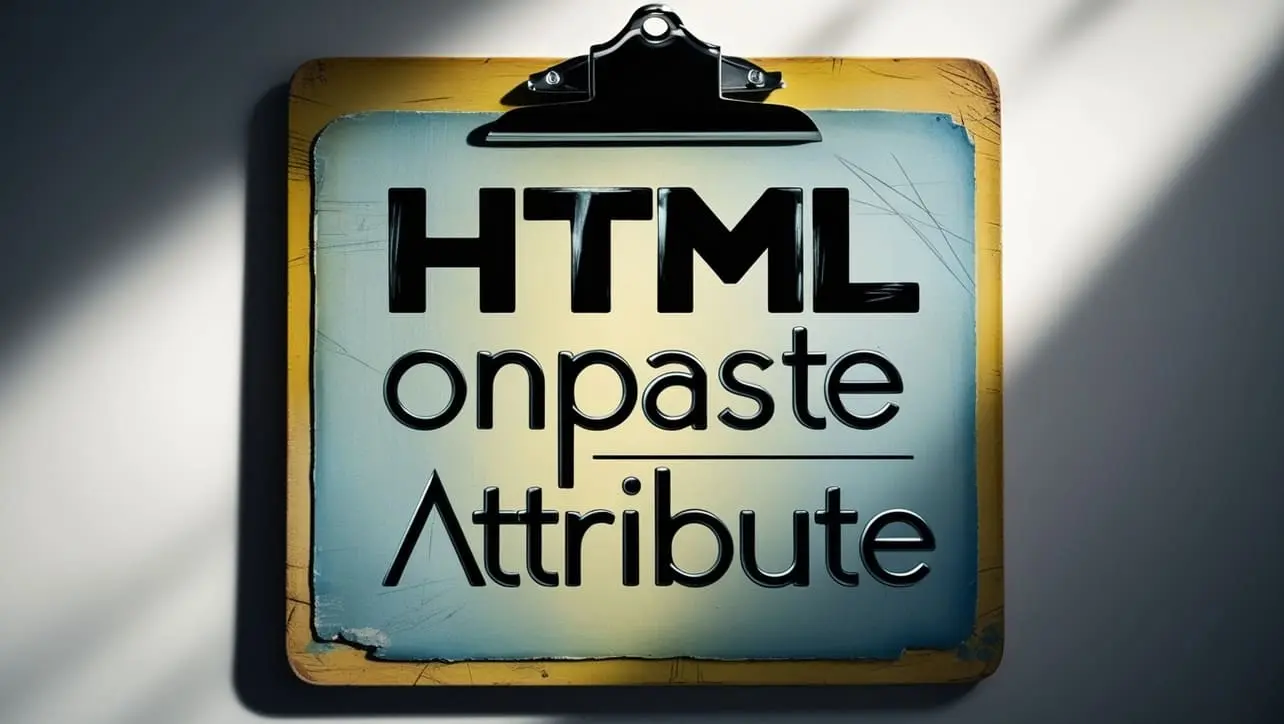
HTML Topics
- HTML Intro
- HTML Basic
- HTML Editors
- HTML CSS
- HTML Tags
- HTML Deprecated Tags
- HTML Events
- HTML Event Attributes
- HTML Global Attributes
- HTML Attributes
- abbr
- accept
- accept-charset
- accesskey
- action
- align
- alt
- archive
- as
- async
- autocapitalize
- autocomplete
- autofocus
- autoplay
- axis
- bgcolor
- border
- cellpadding
- cellspacing
- char
- charoff
- charset
- checked
- cite
- class
- classid
- codebase
- codetype
- color
- cols
- colspan
- compact
- content
- contenteditable
- controls
- coords
- crossorigin
- data
- data-*
- datetime
- declare
- default
- defer
- dir
- dirname
- disabled
- download
- draggable
- enctype
- enterkeyhint
- for
- form
- formaction
- formenctype
- formmethod
- formnovalidate
- formtarget
- frame
- frameborder
- frameset
- headers
- height
- hidden
- high
- href
- hreflang
- hspace
- http-equiv
- id
- inert
- inputmode
- ismap
- kind
- label
- lang
- list
- loop
- low
- max
- maxlength
- media
- method
- min
- multiple
- muted
- name
- novalidate
- onabort
- onafterprint
- onbeforeprint
- onbeforeunload
- onblur
- oncanplay
- oncanplaythrough
- onchange
- onclick
- oncontextmenu
- oncopy
- oncuechange
- oncut
- ondblclick
- ondrag
- ondragend
- ondragenter
- ondragleave
- ondragover
- ondragstart
- ondrop
- ondurationchange
- onemptied
- onended
- onerror
- onfocus
- onhashchange
- oninput
- oninvalid
- onkeydown
- onkeypress
- onkeyup
- onload
- onloadeddata
- onloadedmetadata
- onloadstart
- onmousedown
- onmousemove
- onmouseout
- onmouseover
- onmouseup
- onmousewheel
- onoffline
- ononline
- onpagehide
- onpageshow
- onpaste
- onpause
- onplay
- onplaying
- onpopstate
- onprogress
- onratechange
- onreset
- onresize
- onscroll
- onsearch
- onseeked
- onseeking
- onselect
- onstalled
- onstorage
- onsubmit
- onsuspend
- ontimeupdate
- ontoggle
- onunload
- onvolumechange
- onwaiting
- onwheel
- open
- optimum
- pattern
- placeholder
- popover
- popovertarget
- popovertargetaction
- poster
- preload
- readonly
- rel
- required
- reversed
- rows
- rowspan
- sandbox
- scope
- selected
- shape
- size
- sizes
- span
- spellcheck
- src
- srcdoc
- srclang
- srcset
- start
- step
- style
- tabindex
- target
- title
- translate
- type
- usemap
- value
- width
- wrap
- HTML Comments
- HTML Entity
- HTML Head
- HTML Form
- HTML IndexedDB
- HTML Drag & Drop
- HTML Geolocation
- HTML Canvas
- HTML Status Code
- HTML Language Code
- HTML Country Code
- HTML Charset
- MIME Types
HTML onpaste Attribute

Photo Credit to CodeToFun
🙋 Introduction
The onpaste attribute is a powerful tool in HTML that allows developers to execute JavaScript code when a user pastes content into an input field or text area.
This attribute provides the flexibility to customize the behavior of your web forms based on the pasted content.
🎯 Purpose of onpaste
The primary purpose of the onpaste attribute is to enable developers to respond to the paste action in real-time.
By associating a JavaScript function with this attribute, you can perform actions such as validation, formatting, or any other custom logic when a user pastes content.
💎 Values
The onpaste attribute accepts JavaScript code as its value. This code will be executed when the user initiates a paste action. Here's a simple example:
<input type="text" onpaste="handlePaste(event)">🧠 How it Works
In this example, the onpaste attribute is set to call the handlePaste function when a user pastes content into the associated input field. The event parameter allows you to access information about the paste event.
📄 Example
Let's delve into a practical example to illustrate the use of the onpaste attribute:
<input type="text" id="pasteInput" onpaste="handlePaste(event)">
<script>
function handlePaste(event) {
// Prevent the default paste behavior
event.preventDefault();
// Access the pasted text
const pastedText = event.clipboardData.getData('text');
// Manipulate or validate the pasted text
// For example, converting the text to uppercase
const modifiedText = pastedText.toUpperCase();
// Set the modified text back to the input field
document.getElementById('pasteInput').value = modifiedText;
}
</script>🧠 How it Works
In this example, the handlePaste function is called when a user pastes content into the input field.
It prevents the default paste behavior, accesses the pasted text, performs some manipulation (converting to uppercase in this case), and sets the modified text back to the input field.
🔄 Dynamic Values with JavaScript
Similar to other HTML attributes, the onpaste attribute can be dynamically assigned using JavaScript. Here's an example:
<script>
// Dynamically set onpaste for an input field
document.getElementById("dynamicPasteField").onpaste = function(event) {
// Custom logic for handling paste event
console.log("Paste event handled dynamically");
};
</script>🧠 How it Works
This script dynamically sets the onpaste attribute for an input field with the id "dynamicPasteField," allowing you to define custom logic for handling the paste event.
🏆 Best Practices
- Use the
onpasteattribute judiciously to enhance user experience without overwhelming the user with unnecessary actions. - Be mindful of user expectations when manipulating pasted content. Ensure that any modifications align with the purpose of the input field.
- Test your implementation across different browsers to ensure consistent behavior.
🎉 Conclusion
The onpaste attribute empowers developers to create more dynamic and responsive web forms by customizing the behavior when users paste content.
By leveraging this attribute judiciously, you can enhance the functionality and interactivity of your web applications.
👨💻 Join our Community:
Author

For over eight years, I worked as a full-stack web developer. Now, I have chosen my profession as a full-time blogger at codetofun.com.
Buy me a coffee to make codetofun.com free for everyone.
Buy me a Coffee












If you have any doubts regarding this article (HTML onpaste Attribute), please comment here. I will help you immediately.